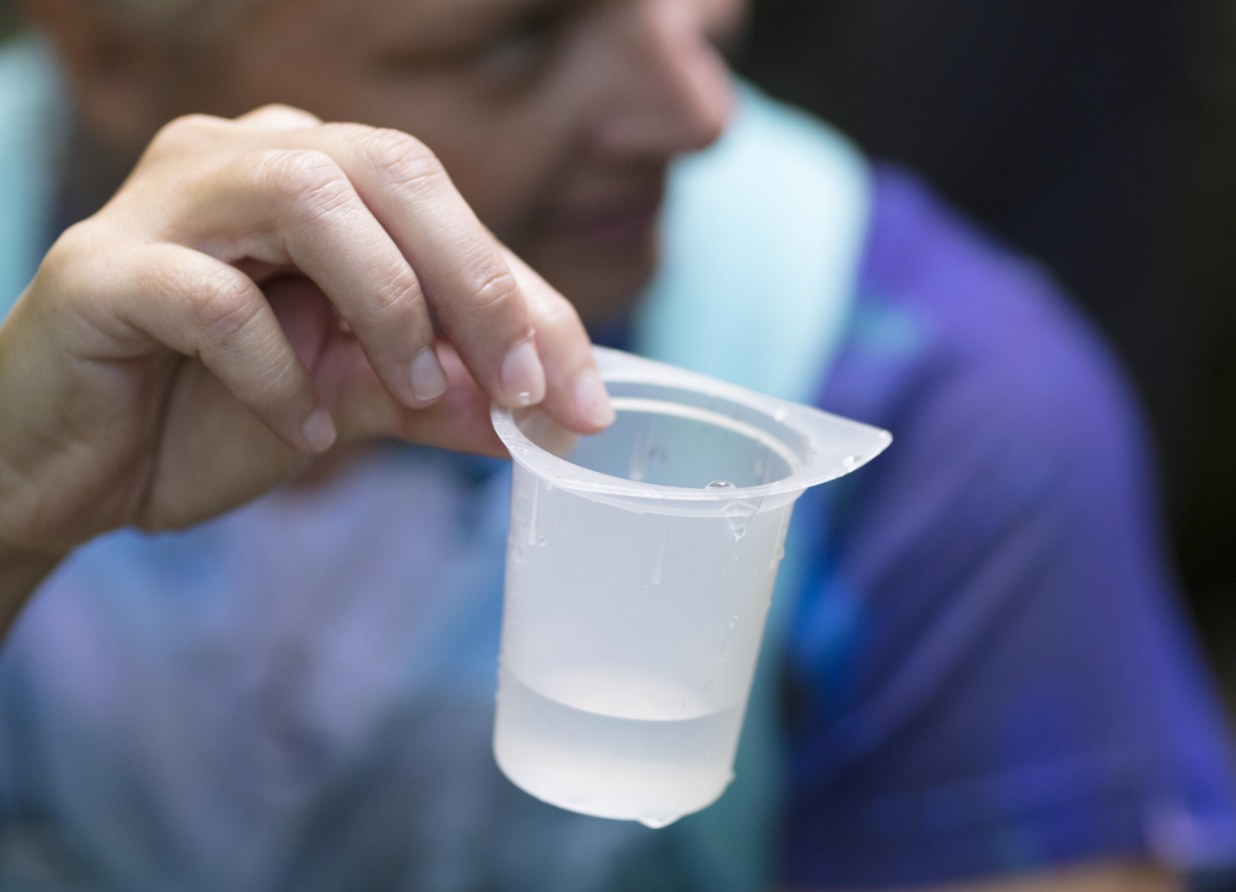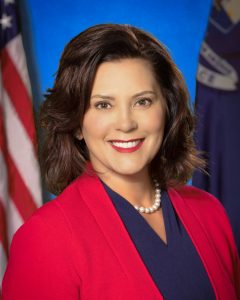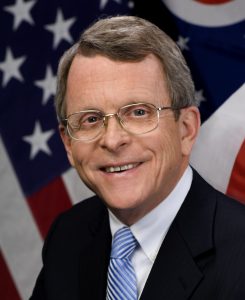
On Whitmer: “She’s backing her campaign rhetoric… with real funding,” advocate says
Michigan Gov. Gretchen Whitmer on Tuesday told legislators who have to approve her budget that she wants Michigan to take a new path where “every community has clean safe drinking water.”

Michigan Governor Gretchen Whitmer, Photo by michigan.gov
Whitmer said the state in recent years has been on a path of “disinvestment” for drinking water as well as education and maintaining Michigan’s roads.
To back her election campaign rhetoric on water, Whitmer is asking the legislature to approve $120 million in supplemental budget money in 2019 that would respond to the PFAS and emerging contaminants crisis, support implementation of lead pipe replacement and help local communities borrow money for water infrastructure.
Michigan has been hard-hit by PFAS. In 2018 the city of Parchment was forced to switch its water supply to Kalamazoo. Action on PFAS by the Department of Environmental Quality (DEQ) is ongoing near Oscoda.
Additionally, Whitmer is asking for $60 million for a statewide initiative to replace drinking water fountains in old school buildings with hydration stations that would supply filtered water.
In 2018 the Detroit school district ordered that all drinking fountains be shut off based on high lead levels in the water.
Speaking to legislators, Whitmer said her goal by 2030 is, “100 percent of communities can trust the drinking water coming from the taps.”
“Big commitment”
“A $120 million general fund commitment for clean water is a pretty big commitment by Michigan standards,” said water policy expert Dave Dempsey, who has held various advisory positions in Michigan including with former Gov. John Blanchard. He is now a senior adviser for the Traverse City water nonprofit For the Love of Water.
“Whitmer’s backing up her campaign rhetoric that water would be a priority with real funding,” said Dempsey.
In making her announcement, Whitmer did not take questions from members of the legislature, but the chair of the Senate appropriations committee Republican Jim Stamas, R-Midland, was receptive to her water budget proposals saying safe drinking water is a priority.

Senate Appropriations Committee Chairman Jim Stamas, listens as Gov. Gretchen Whitmer (left) presents her fiscal year 2020 state budget recommendation, Photo by senatorjimstamas.com
Whitmer was at odds with the Republican majority in the legislature shortly after taking office when they rejected her executive order that would have abolished environmental review panels appointed by former Gov. Rick Snyder.
The panels were approved in a lame-duck session late last year and could have usurped the authority of the DEQ.
Whitmer resubmitted the executive order with the review panels included, and the legislature accepted it.
Her order also reorganized the DEQ along lines that would facilitate Whitmer’s water agenda including a focus on environmental justice that legislators had questioned. That focus could have been the driving force behind the budget provision for hydration stations in schools.
Whitmer’s 2020 budget reduces DEQ funding from $501 million annually to $478 million. The budget narrative did not comment on the reduction.
Wisconsin and Ohio
In Wisconsin, new Democratic Gov. Tony Evers has proclaimed 2019 as the Year of Clean Drinking Water, and his budget released last week reflects the priority.
Like Whitmer, Evers campaigned on fixing Wisconsin’s water problems including the emerging PFAS Issue and pollution from agricultural runoff.
Evers wants legislators to approve $40 million to replace lead service lines that transport drinking water to houses. He also wants $25 million for toxic hotspot cleanup that includes areas of the Milwaukee River.
In Ohio, new Republican Gov. Mike DeWine has not yet released his budget but recently said Lake Erie’s algae issues would be a priority.

Ohio Governor Mike Dewine, Photo by ohioattorneygeneral.gov
Speaking to the Ohio Farm Bureau, DeWine reiterated previous statements about addressing Lake Erie’s algae problems and said he wants everybody including farmers at the table. Phosphorus runoff from farms is the leading contributor to harmful algae blooms that plague Lake Erie’s western basin near Toledo.
He said his administration is willing to put “real money” behind developing solutions for Lake Erie.
“It won’t be done cheaply,” DeWine said, but did not offer specifics. His budget is scheduled for release on March 15.
Some environmental and citizen action groups have been skeptical about money as a solution to Lake Erie’s problems.
A lawsuit is pending in federal court in Toledo that would require Ohio to put Lake Erie on a pollution diet known as a TMDL. The suit was filed by Chicago’s Environmental Law and Policy Center.
And Toledo voters recently approved a Lake Erie Bill of Rights that would grant the lake standing similar to that of citizens in order to bring enforcement action.
While potentially only symbolic, the novel approach expresses the frustration of citizens in Toledo with the lack of progress by Ohio and the U.S. Environmental Protection Agency to protect drinking water.
Featured Image: Water Quality Testing Activity, Photo by the National Park Service via wikimedia




